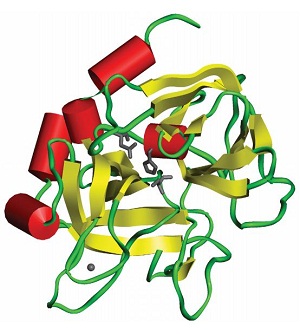Question:
How to choose affinity tags for recombinant protein purification?
The Protein Man Says:
Rather than purifying specific proteins from biological samples, you can opt to produce recombinant proteins instead. There are two distinct advantages of going through this route. First, you can produce vast quantities of proteins and second, you can easily attach affinity tags for the rapid and specific purification of the recombinant proteins.
Recombinant proteins can easily be purified through affinity chromatography. By attaching a specific ligand to a solid support, the ligand will bind with a particular affinity tag while all the untagged proteins will be washed from the solid support. An elution buffer is then applied to the solid support to break the interaction between the ligand and the tagged protein. Some of the most commonly used affinity tags include the following:
 Gluthathione S-Transferase (GST)
Gluthathione S-Transferase (GST)
GST is one of the most commonly used tags in recombinant protein purification. While the GST tag does not affect the protein's original structure and function, you need to make sure that it folds correctly or the tag will be rendered ineffective. Its relatively large size makes the purification of recombinant proteins quite difficult. In addition, it also increases the risk of distorting the natural conformation of the proteins and makes them inappropriate for structural studies. To prevent these things from happening, consider using a specific protease to cleave the GST group from the recombinant protein after purification.
Poly Histidine Tag
The poly histidine tag is a short sequence of six histidine amino acids in frame with the recombinant protein. Purification is done through the immobilized metal ion affinity chromatography or IMAC technique and the recombinant protein is eluted with low pH or by competitive adsorption with imidazole.
Calmodulin Binding Protein (CBP)
The relatively small size of CBP (4 kDa) makes it ideal for purifying delicate proteins under mild conditions. The tag binds to a calmodulin resin and the proteins can be eluted with a neutral buffer containing low concentrations of EGTA, a calcium chelator.
Green Fluorescent Protein (GFP)
GFP can both be used as marker for proteins in living systems as well as in purifying proteins on a hydrophobic column. By using GFP, you can monitor the purification process as it unfolds right before your eyes.
There are a lot of other tags available in the market today so you can choose which one to use based on the type of protein to be purified and your personal preference.






